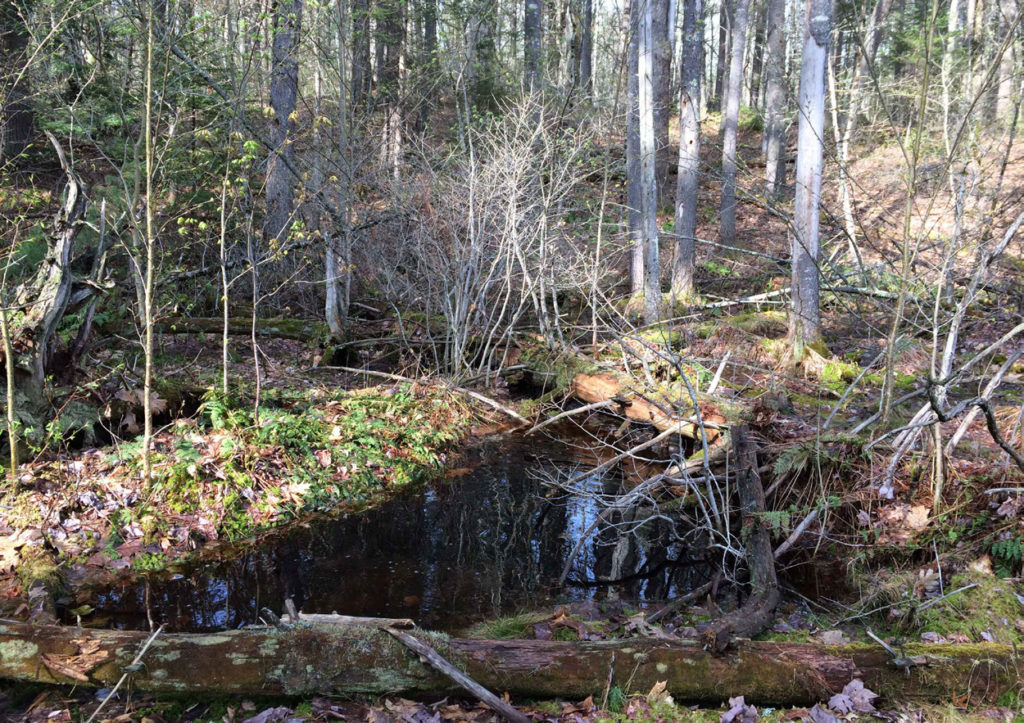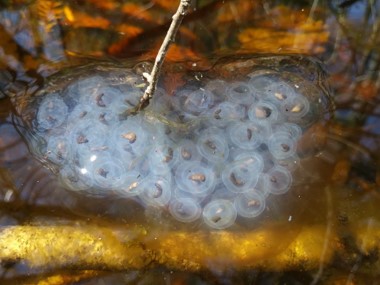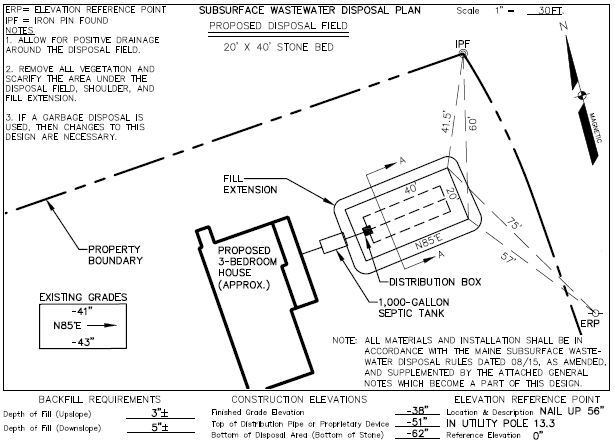
Plan Ahead – Know Your Land
By Gary Fullerton, CSS, LSE – Director, Natural Resources
Whether you are buying, selling, or developing land, there are important environmental characteristics that may limit the value and suitability of the property in question. Does the site have wetlands, streams, vernal pools, or associated setbacks from abutting parcels? Is there a threatened or endangered wildlife habitat? Has the soil or groundwater been contaminated in any way? Is there a shallow ledge, clay soils, or other physical limitations to the building? These are a few of the important questions that must be addressed before assessing or investing in a piece of property.
If you are planning development in 2020, now is the time to start thinking about your environmental and natural resource features. Sebago Technics, Inc. (STI) can help you identify all site constraints that play an important role in determining property value and how property can be developed.
Vernal Pool Identification – April & May
One critical part of your due diligence for marketing or developing property should be the identification of vernal pools. Vernal Pools are temporary bodies of water that are the primary breeding habitat for several species of amphibians. STI has assisted developers and landowners with vernal pool assessments and regulatory permitting since regulations were adopted in 2007. Vernal pools are regulated under the Natural Resources Protection Act by the Maine Department of Environmental Protection (DEP) and under the Maine General Permit by the U.S. Army Corps of Engineers (USACE). Vernal pools can only be surveyed in the Spring before they dry out, don’t miss this small window of opportunity!
The USACE has discretionary authority to regulate a vernal pool based solely on the presence of one or more egg masses of any kind. The DEP only regulates Significant Vernal Pools. A vernal pool is deemed significant by the number and type of pool-breeding amphibian egg masses in a pool, the presence of fairy shrimp, or use by rare, threatened, or endangered species. Unlike the USACE, which has no minimum thresholds, the minimum egg mass thresholds which trigger DEP jurisdiction are:
• Wood Frogs (L. sylvaticus) : ≥40
• Spotted Salamanders (A. maculatum): ≥20
• Blue-Spotted Salamanders (A. laterale): ≥10

Wetlands
Although winter wetland delineation is possible, it is less cost-effective and often requires review once Spring arrives. Wetland characterization and delineation quantifies both the type and amount of impact a potential project may have. As a buyer, seller, or developer understanding the wetlands on a property, and whether or not they are of special significance to different state and federal agencies, can dramatically affect the value and possibilities of the land.
Different types of wetlands have different features which may present different restrictions. Sebago Technics helps clients understand what can and cannot be done, and the associated steps for all possible options, assisting landowners with a wide variety of projects for 39 years. Let Sebago Technics help you navigate various DEP and Army Corps of Engineers regulations and get your project underway today!
Phase I Environmental Site Assessments (ESA)
The Phase I ESA involves a review of records, a site inspection, and interviews with past and current owners, occupants, neighbors, and local government officials and should be conducted alongside the purchase of a commercial or industrial property. The main purpose of a Phase I ESA is to assess the true value and nature of the property in question. This is accomplished by examining the history of the property for soil or groundwater contamination resulting from past use or neighboring sites that may be impacting the property’s value or in worst cases causing civil liability. This report is commonly prepared for real estate and business transactions such as undeveloped land purchases, building and business purchases, leases, new residential developments, and bank loans. If you are buying a house in or adjacent to a commercial area or other environmentally sensitive business, you should have a Phase I ESA performed on the property prior to obtaining the title.
Voluntary Response Action Program (VRAP)
Since 1993, The Maine DEP’s VRAP has been utilized to limit liability when buying a property where hazardous material has been released. The VRAP allows applicants to voluntarily investigate and clean up properties to the Department’s satisfaction in exchange for protections from Department enforcement actions and is intended to encourage the cleanup and redevelopment of contaminated properties within the state.
Septic System Design
An HHE-200 septic system design form must be approved for any project utilizing a septic system for subsurface wastewater disposal before construction begins. Different sites, wastewater quality, and flow calculations present various challenges to the design of these systems and consulting an experienced Licensed Site Evaluator can be the difference between system longevity and premature failure. Sebago Technics has experience with first time, expansion, and replacement designs ranging from residential to engineered pretreatment commercial settings.

Mounding Analysis
Infiltration of stormwater or leachate from septic systems can cause a localized rise in the groundwater table called a mound. A mounding analysis is used to calculate the size and height of the mound. Mounding analyses are often required during the design of housing subdivisions.
A mounding analysis considers the nature of the soil (sandy vs. clayey), the dimensions of the septic system or infiltration basin and the amount of infiltrated water. Sebago Technics performs mounding analyses both to model the periodic effect of precipitation events and the day-to-day effects of septic systems.
Natural Resources Services
- Wetland Delineation & Mapping
- Vernal Pool Surveys
- Wetland Functional Assessments
- Wetland Mitigation Planning
- Wetland Alteration Permitting (DEP/USACE)
- Global Positioning System (GPS) Services
- Geographic Information System (GIS) Services
- HHE-200 Septic System Applications
- Site Evaluations and Subsurface Wastewater Disposal System Designs
- Septic System Inspections
- High-Intensity Soil Surveys
Environmental Assessments:
- Hydrogeological and Nitrate Studies
- Mounding Analysis
- Site Transmission Analysis
- Phase I/II Site Assessments (ESAs, VRAPs)
- Indoor Air Quality Assessments
- Underground Storage Tank Removal Assessments
- Resource Conservation Recovery Act (RCRA) Hazardous Waste Close-Outs
- Spill Prevention Control & Countermeasure (SPCC) Plans
- Stormwater Pollution Prevention Plans (SWPPP)
- Maine Multi-Sector General Permit (MSGP) Stormwater Sampling
- National Environmental Policy Act (NEPA) Permitting
For more information, please contact:
Gary Fullerton, CSS, LSE
Director of Natural Resources
gfullerton@sebagotechnics.com

